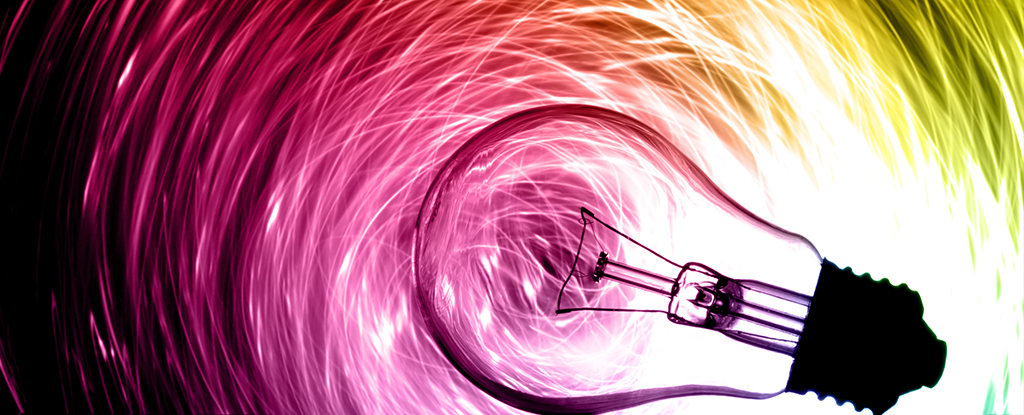Products You May Like
The 2022 Nobel prize for physics has been awarded to a trio of scientists for pioneering experiments in quantum mechanics, the theory covering the micro-world of atoms and particles.
Alain Aspect from Université Paris-Saclay in France, John Clauser from J.F. Clauser & Associates in the US, and Anton Zeilinger from University of Vienna in Austria, will share the prize sum of 10 million Swedish kronor (US$915,000) “for experiments with entangled photons, establishing the violation of Bell inequalities and pioneering quantum information science”.
The world of quantum mechanics appears very odd indeed. In school, we are taught that we can use equations in physics to predict exactly how things will behave in the future – where a ball will go if we roll it down a hill, for example.
Quantum mechanics is different from this. Rather than predicting individual outcomes, it tells us the probability of finding subatomic particles in particular places. A particle can actually be in several places at the same time, before “picking” one location at random when we measure it.
Even the great Albert Einstein himself was unsettled by this – to the point where he was convinced that it was wrong. Rather than outcomes being random, he thought there must be some “hidden variables” – forces or laws that we can’t see – which predictably influence the results of our measurements.
Some physicists, however, embraced the consequences of quantum mechanics. John Bell, a physicist from Northern Ireland, made an important breakthrough in 1964, devising a theoretical test to show that the hidden variables Einstein had in mind don’t exist.
According to quantum mechanics, particles can be “entangled”, spookily connected so that if you manipulate one then you automatically and immediately also manipulate the other.
If this spookiness – particles far apart mysteriously influencing each other instantaneously – were to be explained by the particles communicating with each other through hidden variables, it would require faster-than-light communication between the two, which Einstein’s theories forbid.
Quantum entanglement is a challenging concept to understand, essentially linking the properties of particles no matter how far apart they are. Imagine a light bulb that emits two photons (light particles) that travel in opposite directions away from it.
If these photons are entangled, then they can share a property, such as their polarization, no matter their distance. Bell imagined doing experiments on these two photons separately and comparing the results of them to prove that they were entangled (truly and mysteriously linked).
Clauser put Bell’s theory into practice at a time when doing experiments on single photons was almost unthinkable. In 1972, just eight years after Bell’s famous thought experiment, Clauser showed that light could indeed be entangled.
While Clauser’s results were groundbreaking, there were a few alternative, more exotic explanations for the results he obtained.
If light didn’t behave quite as the physicists thought, perhaps his results could be explained without entanglement. These explanations are known as loopholes in Bell’s test, and Aspect was the first to challenge this.
Aspect came up with an ingenious experiment to rule out one of the most important potential loopholes in Bell’s test. He showed that the entangled photons in the experiment aren’t actually communicating with each other through hidden variables to decide the outcome of Bell’s test.
This means they really are spookily linked.
In science it is incredibly important to test the concepts that we believe to be correct. And few have played a more important role in doing this than Aspect. Quantum mechanics has been tested time and again over the past century and survived unscathed.
Quantum technology
At this point, you may be forgiven for wondering why it matters how the microscopic world behaves, or that photons can be entangled. This is where the vision of Zeilinger really shines.
We once harnessed our knowledge of classical mechanics to build machines, to make factories, leading to the industrial revolution. Knowledge of the behavior of electronics and semiconductors has driven the digital revolution.
But understanding quantum mechanics allows us to exploit it, to build devices that are capable of doing new things. Indeed, many believe that it will drive the next revolution, of quantum technology.
Quantum entanglement can be harnessed in computing to process information in ways that were not possible before. Detecting small changes in entanglement can allow sensors to detect things with greater precision than ever before.
Communicating with entangled light can also guarantee security, as measurements of quantum systems can reveal the presence of the eavesdropper.
Zeilinger’s work paved the way for the quantum technological revolution by showing how it is possible to link a series of entangled systems together, to build the quantum equivalent of a network.
In 2022, these applications of quantum mechanics are not science fiction. We have the first quantum computers. The Micius satellite uses entanglement to enable secure communications across the world. And quantum sensors are being used in applications from medical imaging to detecting submarines.
Ultimately, the 2022 Nobel panel have recognized the importance of the practical foundations producing, manipulating, and testing quantum entanglement and the revolution it is helping to drive.
I am pleased to see this trio receiving the award. In 2002, I started a PhD at the University of Cambridge that was inspired by their work. The aim of my project was to make a simple semiconductor device to generate entangled light.
This was to greatly simplify the equipment needed to do quantum experiments and to allow practical devices for real-world applications to be built. Our work was successful and it amazes and excites me to see the leaps and bounds that have been made in the field since.![]()
Robert Young, Professor of Physics and Director of the Lancaster Quantum Technology Centre, Lancaster University
This article is republished from The Conversation under a Creative Commons license. Read the original article.
